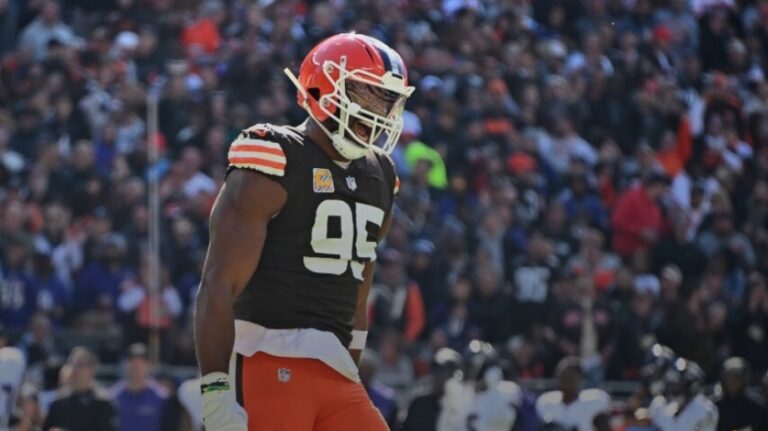With the NFL trade deadline looming, the Cleveland Browns are grappling with a pivotal decision regarding defensive end Myles Garrett. As the team navigates the financial implications of Deshaun Watson’s lucrative contract, speculation surrounds Garrett’s potential departure. While trading the star pass-rusher could yield a substantial haul of draft picks, it would also trigger significant cap repercussions.
The numbers are staggering: trading Garrett would accelerate $62.976 million in bonus payments into the 2025 cap, compounding the existing $72.935 million cap charge for Watson’s deal. This would create a daunting financial challenge for the Browns, who owe Watson $92 million in cash for 2025 and 2026. In contrast, retaining Garrett would result in a manageable $19.722 million cap number for 2025 – a $40 million difference.
The Browns’ dilemma is multifaceted. On one hand, trading Garrett could provide essential draft capital to replenish the roster with young, affordable talent. This would be crucial in offsetting the financial burden of Watson’s contract, which will dominate the team’s cap space for years to come. However, the cap chaos resulting from a Garrett trade would necessitate substantial returns to justify the move.
Garrett’s value to the Browns cannot be overstated. The defensive end has been a game-changer since his arrival, accumulating 34.5 sacks and 54 tackles for loss. His presence has transformed the team’s pass rush, and his departure would leave a significant void. The Browns must carefully weigh the benefits of trading Garrett against the potential consequences.
The Watson contract, signed in March 2022, has become a defining factor in the Browns’ decision-making process. The deal’s sheer size and structure have created cap complications that will persist for several seasons. Trading Garrett would exacerbate these issues, making it essential for the Browns to secure substantial compensation.
As the trade deadline approaches, the Browns will face intense scrutiny. Will they opt to trade Garrett, risking cap chaos, or retain him, ensuring stability and familiarity on defense? The answer will have far-reaching implications for the team’s short-term and long-term prospects.
The NFL trade market is notoriously unpredictable, but one thing is certain: the Browns must make a decision that aligns with their strategic goals. If they choose to trade Garrett, the returns must be substantial enough to justify the cap consequences. Alternatively, retaining him would provide continuity and leadership on defense.
In conclusion, the Browns’ decision on Myles Garrett’s future will have significant cap and roster implications. As the trade deadline draws near, the team must navigate this critical juncture with precision, balancing short-term needs with long-term sustainability.
